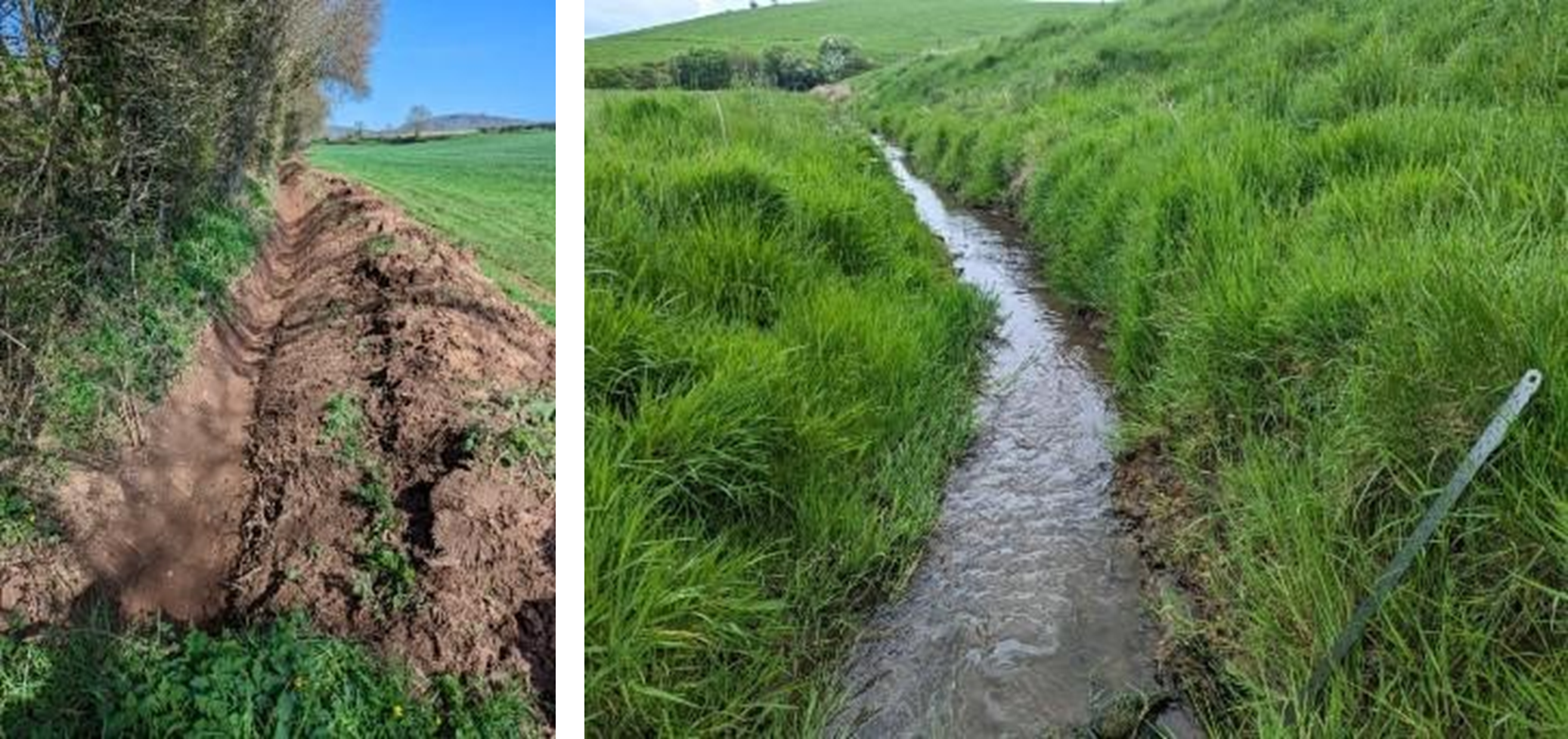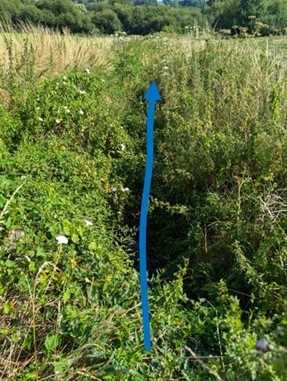Enhanced Drainage Ditch Management for Nutrient Transport Reduction

Greenshank Environmental have developed a novel approach to managing small watercourses in agricultural environments. ‘Enhanced drainage ditch management’ combines three ‘Best Management Practices’ (BMPs) that have predominantly been used in North American settings and are gaining traction in China and northern Europe. Greenshank initially proposed an enhanced drainage management scheme our nutrient mitigation scheme in Somerset, to generate nutrient mitigation to support nutrient neutrality. This scheme became the pilot project that informed a framework methodology for enhanced drainage ditch management. Greenshank were commissioned by Natural England (NE) to produce this frameworkand it is due for release in Autumn 2024. The framework details an approach todeploying enhanced drainage ditch management in artificial watercourses and small watercourses that are managed as drainage ditches. Greenshank is now seeking deployment opportunities for this novel approach to deliver nutrient neutrality mitigation schemes, as well as exploring other funding streams suchas Catchment Nutrient Balancing (CNB) for water companies that may be able to finance these interventions.
What does an enhanced drainage ditch management scheme look like?
The enhanced drainage ditch management approach combines a two-stage cross-section with low-grade weirs and vegetation on the inset floodplain benches. This design is shown in Figure 1.
The combination of these three BMPs is aimed at promoting natural processes of nutrient retention and cycling. The design of an enhanced drainage ditch management scheme was developed from a synthesis ofdifferent sources that detail key design considerations. These sources are acombination of academic journal articles and guidance documents from the US Department of Agriculture, providing details on how to specify the dimensionsof a two-stage channel and informing recommendations on vegetation establishmentand low-grade weir design. By combining the three BMPs within a single channel, it is aimed to increase hydraulic residence time within the drainage network, promoting a suite of natural processes that reduce onward nutrient transport.
The evidence base
Greenshank conducted a literature review which provides the evidence and rationale that underpins the enhanced drainage ditch management methodology. Most of the literature on drainage ditch BMPs notesthat channels managed with these techniques become linear wetland features. Because these techniques are a relatively recent additions to the ‘catchment management’ toolbox for tacking nutrient pollution, the evidence base supporting the use of drainage ditch BMPsfor nutrient management only dates back to 2011. As such, although the average nutrient reduction efficiency for the studied BMPs was ~40%, a lower bound precautionary estimate of the efficacy of these measures, was calculated as 28% for both nitrogen and phosphorus.

Figure 1: A two-stage channel cross-section contrasted with a conventional trapezoidal channel (top images1). A heavily managed,trapezoidal section of a small beck (middle image) and a schematic (bottomimage) of a proposed design for a drainage ditch management project at this location. Note: large woody debris can also be referred to as logjams and areused commonly in natural flood management.
What does a good deployment location look like?
The enhanced drainage ditch management approach is not suitable to all watercourses. There is an upper size limit at which point:a) the energy in a watercourse and subsequent erosion risk may make it difficult to maintain a scheme design; b) the watercourse has other environmental designations that cause feasibility issues. Furthermore, although the methodology can be applied to natural watercourses (as opposed to onlyartificial drainage ditches), these watercourses have to be heavily managed and lacking in natural features. As such, there is a ‘goldilocks zone’ for enhanced drainage ditch schemes is generally in the upper sections of river network.
Figure 2 provides two examples of active projects Greenshank are working with landowners to deliver. These two examples show thekind of ditches and watercourses that would be suitable for enhanced drainage ditch management. The methodology for these schemes stipulates that where ditches are ‘ephemeral’, i.e., they only flow flowing rainfall, it must be possible to show that the ditch connects to a permanently flowing watercourse downstream.This is to remove the risk of landowners putting forward locations where water flows into a ditch that simply retains input flows and thus is likely to already be providing nutrient reduction benefits. For permanently flowing watercourses, it should be evident that a landowner manages a stream for thepurposes of draining their land and reducing flood risk. This can be seen in the right image in Figure 2 where the landowner has straightened and deepened the channel to increase the transfer rate of water downstream.

Figure 2: Examples of active Greenshank project locations where deployment of enhanced drainage ditch management is planned. The left image shows an ‘ephemeral’ ditch that only flows following rainfall. The rightimage shows a permanently flowing small watercourse that the landowner managesas a ditch to drain surrounding land.
There are no specific upper width limits for whenthe enhanced drainage ditch management approach may become unsuitable. So far, our experience is suggesting channels that are > 5 m wide tend to be toolarge and also likely to have environmental designations that may limit deployment feasibility. Ideally the channel will also be open and not significantly overgrown, as shown in Figure 2. However, landowners often allowditches and small watercourse to become overgrown in summer and then vegetation dies back in winter. An example of a ditch of this type is shown in Figure 3,where the landowner confirmed that the ditch is open and fast flowing following vegetation die back in autumn. This location should be suitable for a deployment.

Figure 3: An overgrown ditch in Wiltshire during summer.The blue arrow shows the path of the channel.
Quantifying nutrient reductions
To justify the costs of deploying an enhanced drainage ditch management scheme, it is necessary to calculate a precautionaryestimate of the potential nutrient reduction due to the scheme. Greenshank have developed a desk-based approach to this calculation, using a range of secondary data sources to:
• Delineate the catchment draining to aditch.
• Identify the land uses in the catchment.
• Link land uses to Farmscoper export coefficients describing nutrient export from each land use.
• Calculate the total nutrient export from landuse in the catchment, which is the nutrient input to the scheme.
• Reduce the nutrient input by the precautionary reduction efficiency (as above) to estimate the mitigation potential of the scheme.
It is acknowledged that this approach relies on a number of assumptions. Where assumptions were required, the Precautionary Principle has been applied and therefore it is likely that a scheme will overdeliver on the estimated mitigation potential.
Supporting landowners in better watercourse management
Many landowners are looking to diversify their incomes from traditional farm businesses. New funding streams such as nutrient neutrality and CNB provide new opportunities for landowners to be rewarded financially for implementing better watercourse management. Greenshank providesend-to-end support for landowners, so they can realise a financial benefitwhile improving the environment.
Greenshank’s enhanced drainage ditch management methodology is primarily aimed at nutrient management, but it will deliver several other environmental benefits. Supporting landowners to deliver these schemes will therefore also result in biodiversity improvements, natural flood management and potential improvements in water resources management.
If this interests you, you can get in touch via our contact form.
Ready to buy your units?
Easily buy your BNG units online today to ensure compliance and positive environmental impact.




